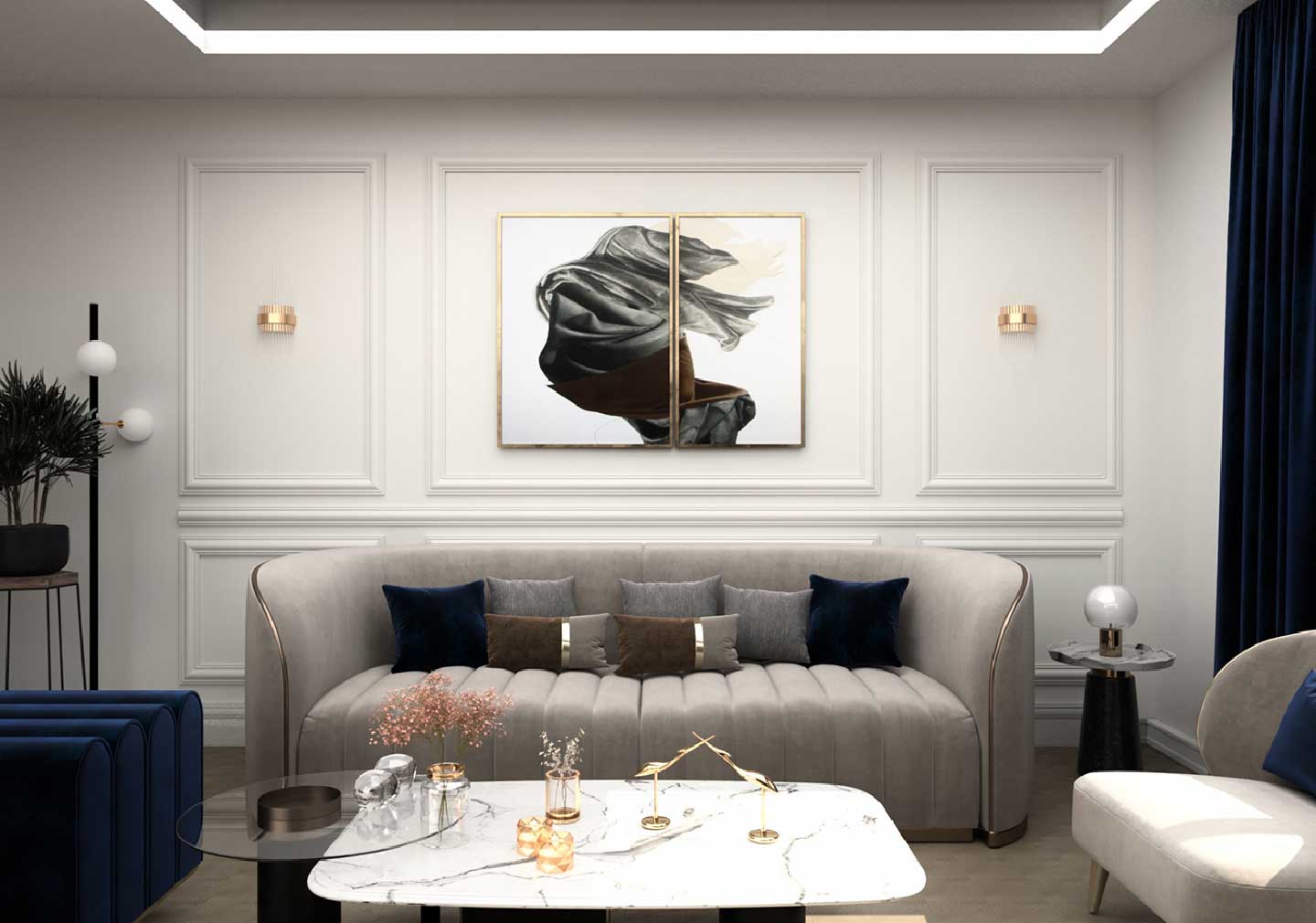
Art Deco, a timeless and iconic design style that emerged in the early 20th century, continues to captivate the world with its elegant aesthetics and innovative approach to design. Rooted in the post-World War I era, Art Deco reflects a harmonious fusion of luxury, glamour, and modernism, making it a popular choice for interior designers and homeowners seeking to infuse their spaces with sophistication and opulence.
In this blog post, we will explore the fascinating world of Art Deco inspired luxury interiors, uncovering the key elements, design principles, and techniques that define this stunning style. From its historical origins to its contemporary influence, we will delve deep into the allure of Art Deco and discover how it continues to inspire contemporary interior design trends.

Art Deco emerged in the 1920s as a reaction to the austerity of World War I and the decorative excesses of the Art Nouveau movement. It was first showcased at the 1925 International Exposition of Modern Industrial and Decorative Arts in Paris, from which its name derives. This exhibition was a turning point for design, as it introduced a new era of sophistication and modernity. Art Deco swiftly gained popularity and spread across the globe, influencing architecture, fashion, and, most notably, interior design.
The origins of Art Deco can be traced back to a confluence of various artistic movements and historical events. Emerging in the aftermath of World War I, the style symbolized a shift towards optimism and progress after a period of global upheaval.
Art Deco drew inspiration from the geometric forms of Cubism, the vibrant colors of Fauvism, and the fascination with modern machinery from the Industrial Age. Additionally, it embraced the fascination with ancient civilizations like Egypt and their art, particularly after the discovery of King Tutankhamun’s tomb in 1922, which ignited a craze for Egyptian motifs.
The amalgamation of these diverse influences resulted in a design style that celebrated modernity while still acknowledging the past, providing a fresh and exciting alternative to the prevailing decorative aesthetics of its time. The sleek lines, sumptuous materials, and iconic motifs of Art Deco quickly spread across the world, leaving an indelible mark on the architecture and design of the 20th century.

One of the hallmarks of Art Deco design is its bold use of geometric patterns and shapes. Whether it’s zigzags, chevrons, sunbursts, or stepped forms, Art Deco interiors celebrate symmetry and clean lines, creating a sense of order and visual appeal.
Art Deco embraces luxurious and opulent materials, including exotic woods, marble, glass, metal accents, and lacquered finishes. The use of these materials elevates the ambiance of a space and adds a touch of extravagance.
Bold and rich color schemes are another characteristic of Art Deco interiors. Deep hues like emerald, green, sapphire blue, ruby red, and gold are prevalent, evoking a sense of luxury and warmth.
Art Deco furniture often boasts sleek and streamlined silhouettes, reflecting the modernistic influence on the style. Upholstered pieces are adorned with sumptuous fabrics featuring geometric patterns or lavish textures.
The sunburst, the Egyptian lotus flower, and the stylized female figure known as the “Flapper” are some of the iconic motifs that recur in Art Deco design. These motifs contribute to the overall elegance and glamour of the interiors.
Lighting plays a pivotal role in Art Deco interiors, with statement chandeliers, pendant lights, and sconces adorned with glass, crystal, and chrome elements, illuminating the space with a dazzling glow.
Begin by analyzing the layout and flow of your space. Art Deco interiors often feature open and airy spaces, allowing the furniture and decorative elements to shine.
Consider bold and textured wallpapers or art deco-inspired wall panels to create a striking backdrop. Parquet or geometric patterned flooring adds to the overall aesthetic.
Choose furniture with sleek lines and luxurious materials. Upholstered pieces in velvet or leather with chrome or brass accents are quintessential Art Deco choices.
Enhance the atmosphere with accessories like sunburst mirrors, geometric sculptures, and statement art pieces. Incorporate textiles with rich textures like velvet or silk for added opulence.
Invest in distinctive lighting fixtures that showcase the glamor of the Art Deco era. Crystal chandeliers, geometric pendant lights, and wall sconces can instantly elevate the space.
Vintage Art Deco artifacts or reproductions can lend authenticity to the design. Look for items like classic radios, cocktail shakers, or sculptures from the period.

While Art Deco is rooted in history, it continues to inspire contemporary interior design. Many modern designers draw inspiration from Art Deco’s bold geometry, luxurious materials, and timeless elegance, infusing it into minimalist and contemporary spaces.
Incorporating Art Deco elements into minimalist interiors can add a touch of luxury and character without overwhelming the space.
Mixing Art Deco with other styles like Mid-Century Modern or Scandinavian design can create a unique and eclectic space that pays homage to the past while embracing the present.
Contemporary designers often borrow from the rich and dramatic Art Deco color palette to add depth and visual interest to modern spaces.
Furniture designers today reinterpret Art Deco shapes and forms, offering a fresh take on classic Art Deco design.
In conclusion, Art Deco remains a captivating design style that effortlessly blends glamour and modernism, captivating the world with its timeless allure. Rooted in the post-World War I era, this iconic movement emerged as a celebration of progress, optimism, and a break from the past.
By drawing inspiration from various artistic movements and historical events, Art Deco evolved into a unique fusion of geometric forms, rich materials, dramatic colors, and iconic motifs. Its influence spread across the globe, shaping not only interior design but also architecture, fashion, and art.
Today, Art Deco continues to inspire contemporary designers, who reinterpret its elements to create sophisticated and eclectic spaces. Whether it is through classic Art Deco interiors or modern interpretations, the essence of Art Deco’s elegance and grandeur prevails, making it a cherished and enduring style in the world of luxury interiors.